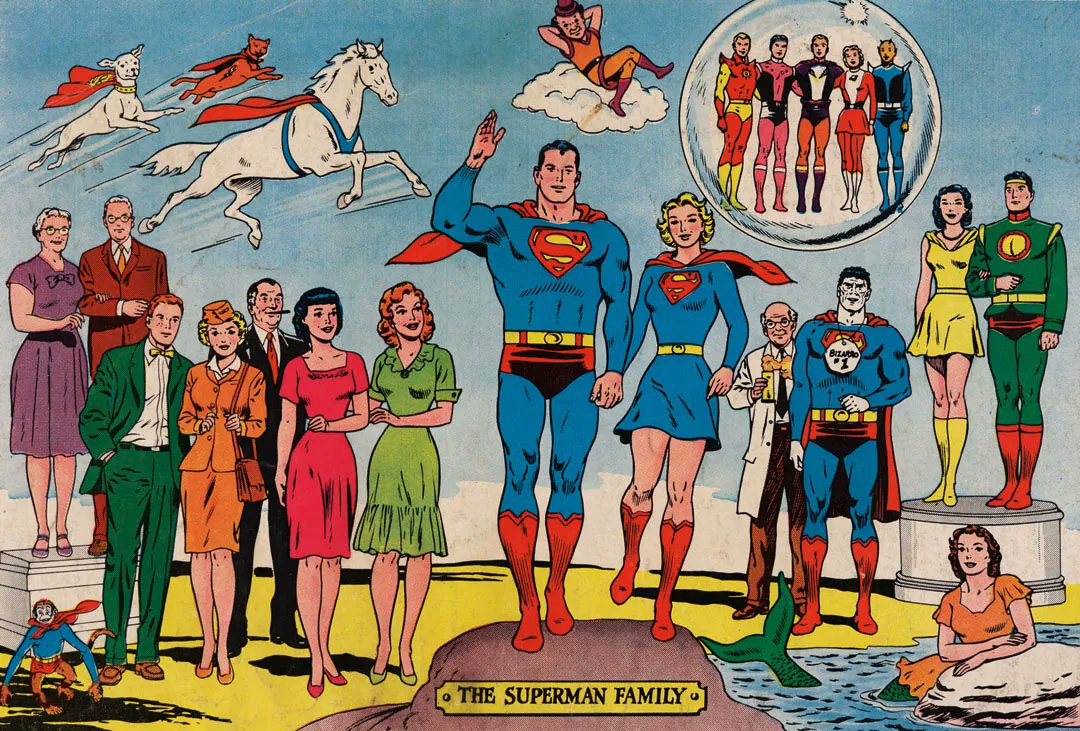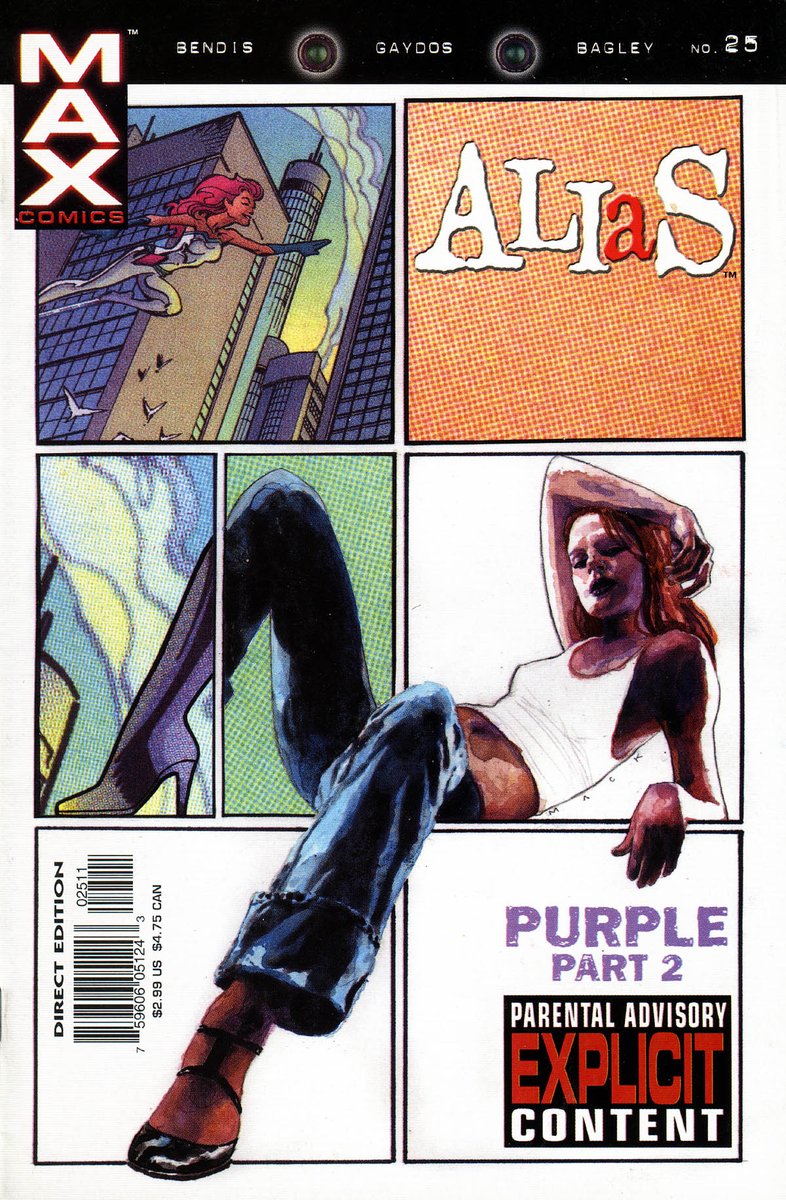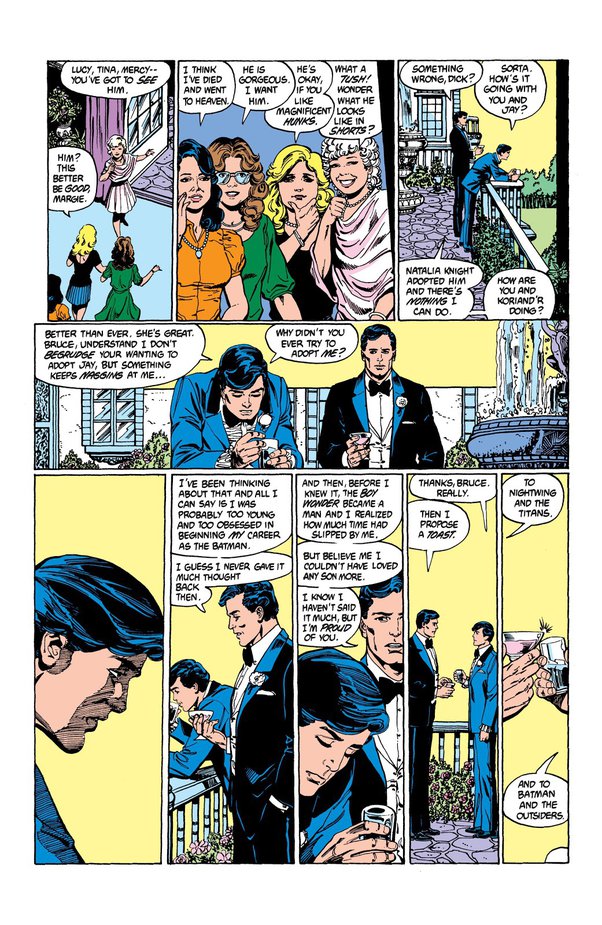
Academics reading and celebrating the style, substance, and sublimity of all kinds of comics. By scholars, for everyone. Led by @peppard_anna & @ClaremontRun.
How to get URL link on X (Twitter) App



 Despite an aesthetic shift from teenage girl to cigar-chomping demon, the character of Illyana Rasputin has a great deal in common with the character Hellboy, and actually exhibits a lot of the attributes for which Hellboy was praised, years ahead of its release. 2/9
Despite an aesthetic shift from teenage girl to cigar-chomping demon, the character of Illyana Rasputin has a great deal in common with the character Hellboy, and actually exhibits a lot of the attributes for which Hellboy was praised, years ahead of its release. 2/9 

 Each of Hellboy’s paranormal investigations typically devolves, at some point, into a violent slugfest between the nigh-indestructible Hellboy and some other type of inhuman monster, who is usually (though not always) very large & very strong, and thus, very hard to kill. 2/12
Each of Hellboy’s paranormal investigations typically devolves, at some point, into a violent slugfest between the nigh-indestructible Hellboy and some other type of inhuman monster, who is usually (though not always) very large & very strong, and thus, very hard to kill. 2/12 

 From the outset, Kirby and Lee base the X-Men’s internal character conflicts around two forms of patriarchal validation: The first (and most obvious) is the internal competition amongst the male teammates (and even Prof X) for the affection of Jean Grey. 2/12
From the outset, Kirby and Lee base the X-Men’s internal character conflicts around two forms of patriarchal validation: The first (and most obvious) is the internal competition amongst the male teammates (and even Prof X) for the affection of Jean Grey. 2/12 

 Yockey opens his essay by highlighting “the dialectic of the familiar and the strange” in this pinup of “The Superman Family” drawn by Curt Swan. It originally appeared on the back cover of Superman Annual #6 (1962) and was reprinted multiple times throughout the ’60s. 2/11
Yockey opens his essay by highlighting “the dialectic of the familiar and the strange” in this pinup of “The Superman Family” drawn by Curt Swan. It originally appeared on the back cover of Superman Annual #6 (1962) and was reprinted multiple times throughout the ’60s. 2/11 

 The ways Wonder Woman changed post-WWII partly extend from the emphasis on domesticity & traditional gender roles in Cold War America. Wartime justified WW’s heroism, just like it justified real women working in munitions factories. Postwar, that justification evaporated. 2/9
The ways Wonder Woman changed post-WWII partly extend from the emphasis on domesticity & traditional gender roles in Cold War America. Wartime justified WW’s heroism, just like it justified real women working in munitions factories. Postwar, that justification evaporated. 2/9 

 Throughout the first three sections of the book, chronicling Riel’s unlikely rise to power and doomed efforts to lead the Métis people against the Canadian government in a war of independence that led, ultimately, to massacre, Brown uses a wide variety of perspectives. 2/8
Throughout the first three sections of the book, chronicling Riel’s unlikely rise to power and doomed efforts to lead the Métis people against the Canadian government in a war of independence that led, ultimately, to massacre, Brown uses a wide variety of perspectives. 2/8 

 Alias employs a variety of techniques to insert Jessica Jones into the existing fictional history of the Marvel comics universe. The character’s history is initially hinted at through photos of Jessica dressed as a superhero standing next to the Avengers. 2/12
Alias employs a variety of techniques to insert Jessica Jones into the existing fictional history of the Marvel comics universe. The character’s history is initially hinted at through photos of Jessica dressed as a superhero standing next to the Avengers. 2/12 

 Most notably, Jessica Jones is a noir detective story, not a punch-em-up superhero spectacle. The majority of scenes are constructed around tense, rapid-fire dialogue rather than action sequences. 2/7
Most notably, Jessica Jones is a noir detective story, not a punch-em-up superhero spectacle. The majority of scenes are constructed around tense, rapid-fire dialogue rather than action sequences. 2/7 

 “Alias” emphasizes the gaze of Jessica Jones both narratively and stylistically. At a plot level, her job as a private investigator affords her an active, knowledgeable gaze. She uses experience, technology, and various special skills to see things others don’t. 2/11
“Alias” emphasizes the gaze of Jessica Jones both narratively and stylistically. At a plot level, her job as a private investigator affords her an active, knowledgeable gaze. She uses experience, technology, and various special skills to see things others don’t. 2/11 

 Jessica is a former superhero & current private investigator who often finds herself embroiled in cases involving fellow supers. Jessica isn’t an antihero; she's committed to justice. But she is selfish, flawed, and unapologetically vulgar. Her comic's first word is “f*ck.” 2/9
Jessica is a former superhero & current private investigator who often finds herself embroiled in cases involving fellow supers. Jessica isn’t an antihero; she's committed to justice. But she is selfish, flawed, and unapologetically vulgar. Her comic's first word is “f*ck.” 2/9 

 Robin’s transition to Nightwing is built up slowly throughout the course of the Titans franchise as the story of a young man seeking to escape the shadow of his beloved but emotionally distant father-figure, a perfect vehicle for exploring “Teen” self-discovery. 2/11
Robin’s transition to Nightwing is built up slowly throughout the course of the Titans franchise as the story of a young man seeking to escape the shadow of his beloved but emotionally distant father-figure, a perfect vehicle for exploring “Teen” self-discovery. 2/11 

 At a time when the bronze age of comics was transitioning its depictions of villainy from a focus on mad scientists to personifications of free-market capitalism run amok, Deathstroke was, objectively and obviously, neither of those things. 2/10
At a time when the bronze age of comics was transitioning its depictions of villainy from a focus on mad scientists to personifications of free-market capitalism run amok, Deathstroke was, objectively and obviously, neither of those things. 2/10 

 The first thing to note is the counter-intuitive nature of this relationship. Dick/Kory (DicKory) is (canonically) a committed, monogamous relationship between two consenting young adults. Yet within that seemingly-nuclear structure, queer elements might still emerge. 2/9
The first thing to note is the counter-intuitive nature of this relationship. Dick/Kory (DicKory) is (canonically) a committed, monogamous relationship between two consenting young adults. Yet within that seemingly-nuclear structure, queer elements might still emerge. 2/9 

 Intersectionality is defined by Patrick R. Grzanka as explorations of how different categories “of identity and inequality shape the contours of social life & structures” - understanding that these categories overlap & juxtapose, producing different experiences accordingly. 2/11
Intersectionality is defined by Patrick R. Grzanka as explorations of how different categories “of identity and inequality shape the contours of social life & structures” - understanding that these categories overlap & juxtapose, producing different experiences accordingly. 2/11 


 The New Teen Titans debuted the same month that the final chapter of the Dark Phoenix Saga was published. As such it is interesting to consider how that particular character arc might be read parallel to key character elements in each of the Titans. 2/9
The New Teen Titans debuted the same month that the final chapter of the Dark Phoenix Saga was published. As such it is interesting to consider how that particular character arc might be read parallel to key character elements in each of the Titans. 2/9 

 After the team’s first encounter with Deathstroke, Starfire chastises Raven: “You’re letting them go? But they attacked us – they tried to kill us.” Raven responds: “If there is a difference between his kind and ours, it must be in our compassion for an enemy.” 2/8
After the team’s first encounter with Deathstroke, Starfire chastises Raven: “You’re letting them go? But they attacked us – they tried to kill us.” Raven responds: “If there is a difference between his kind and ours, it must be in our compassion for an enemy.” 2/8 

 According to Singer, Pérez has been critically overlooked. “The reasons for this neglect aren’t obscure. His work is rooted squarely in the tropes of heroic fantasy rather than the realistic self-expression that has commanded the most attention in comics studies” 2/7
According to Singer, Pérez has been critically overlooked. “The reasons for this neglect aren’t obscure. His work is rooted squarely in the tropes of heroic fantasy rather than the realistic self-expression that has commanded the most attention in comics studies” 2/7 

 The relaunched title was co-created by writer Marv Wolfman and penciller George Pérez (overseen by Len Wein) and launched its number one issue with finishes by Romeo Tanghal, letters by Ben Oda, and colours by Adrienne Roy. 2/9
The relaunched title was co-created by writer Marv Wolfman and penciller George Pérez (overseen by Len Wein) and launched its number one issue with finishes by Romeo Tanghal, letters by Ben Oda, and colours by Adrienne Roy. 2/9 

 Many gag strips employ slapstick, defined as “a style of humor involving exaggerated physical activity that exceeds the boundaries of normal physical comedy” (Wikipedia). Comic strips use juxtaposition to generate slapstick and amplify punchlines. 2/12
Many gag strips employ slapstick, defined as “a style of humor involving exaggerated physical activity that exceeds the boundaries of normal physical comedy” (Wikipedia). Comic strips use juxtaposition to generate slapstick and amplify punchlines. 2/12 

 There’s no question that Watterson’s strip is both innovative and distinctive, but Watterson himself was a student of the comic strip and simply having a great eye for imitable masters can be seen as one of the more fundamental skills in Watterson’s toolbox. 2/7
There’s no question that Watterson’s strip is both innovative and distinctive, but Watterson himself was a student of the comic strip and simply having a great eye for imitable masters can be seen as one of the more fundamental skills in Watterson’s toolbox. 2/7 

 Wildly popular figures such as Happy Hooligan (1900-1930) and Abie the Agent (1914-1940) were premised on racial caricature of Irish and Jewish people, respectively, finding a large audience with the potential to mass-disseminate and normalize grotesque portrayals. 2/8
Wildly popular figures such as Happy Hooligan (1900-1930) and Abie the Agent (1914-1940) were premised on racial caricature of Irish and Jewish people, respectively, finding a large audience with the potential to mass-disseminate and normalize grotesque portrayals. 2/8 